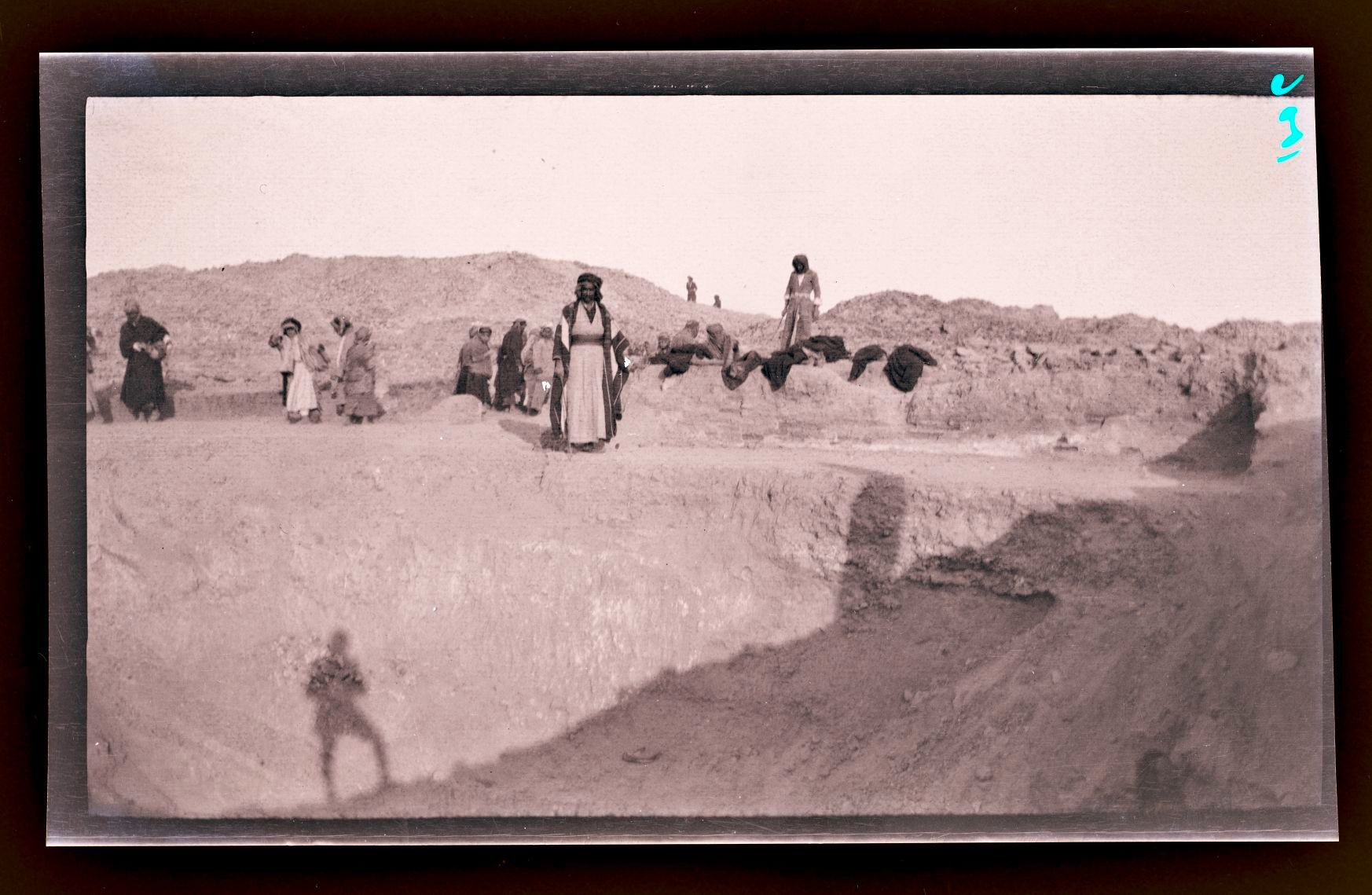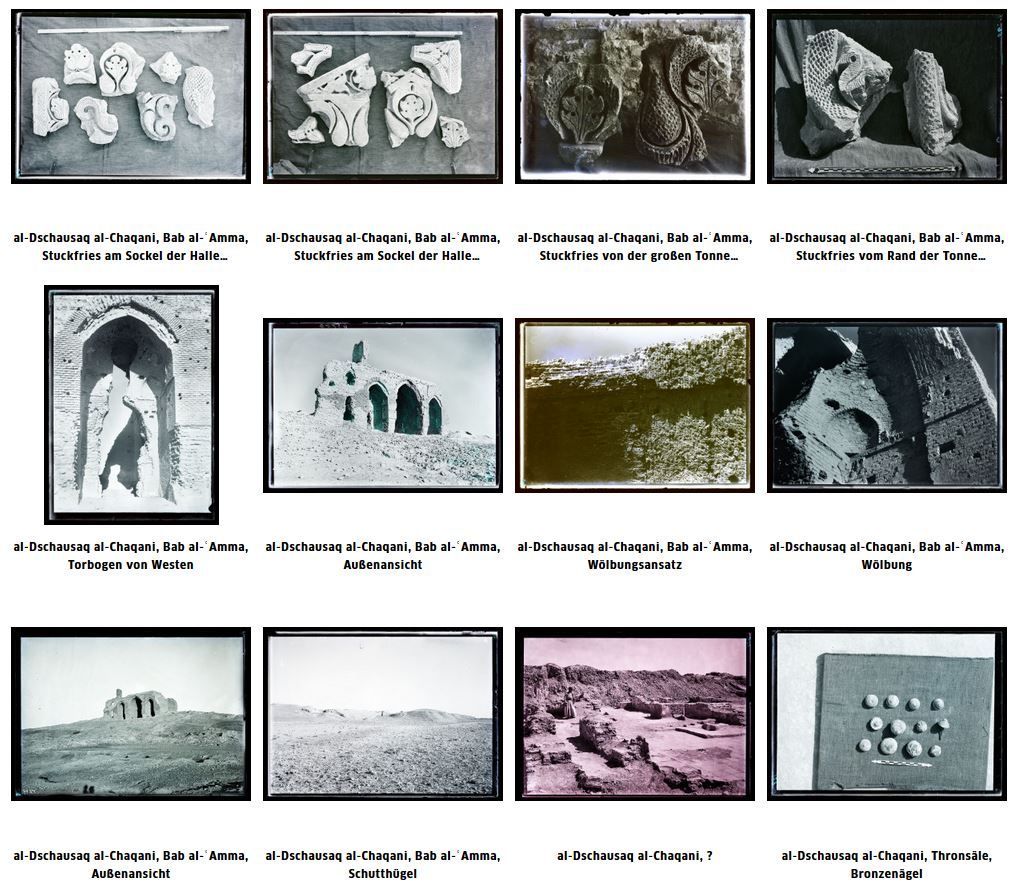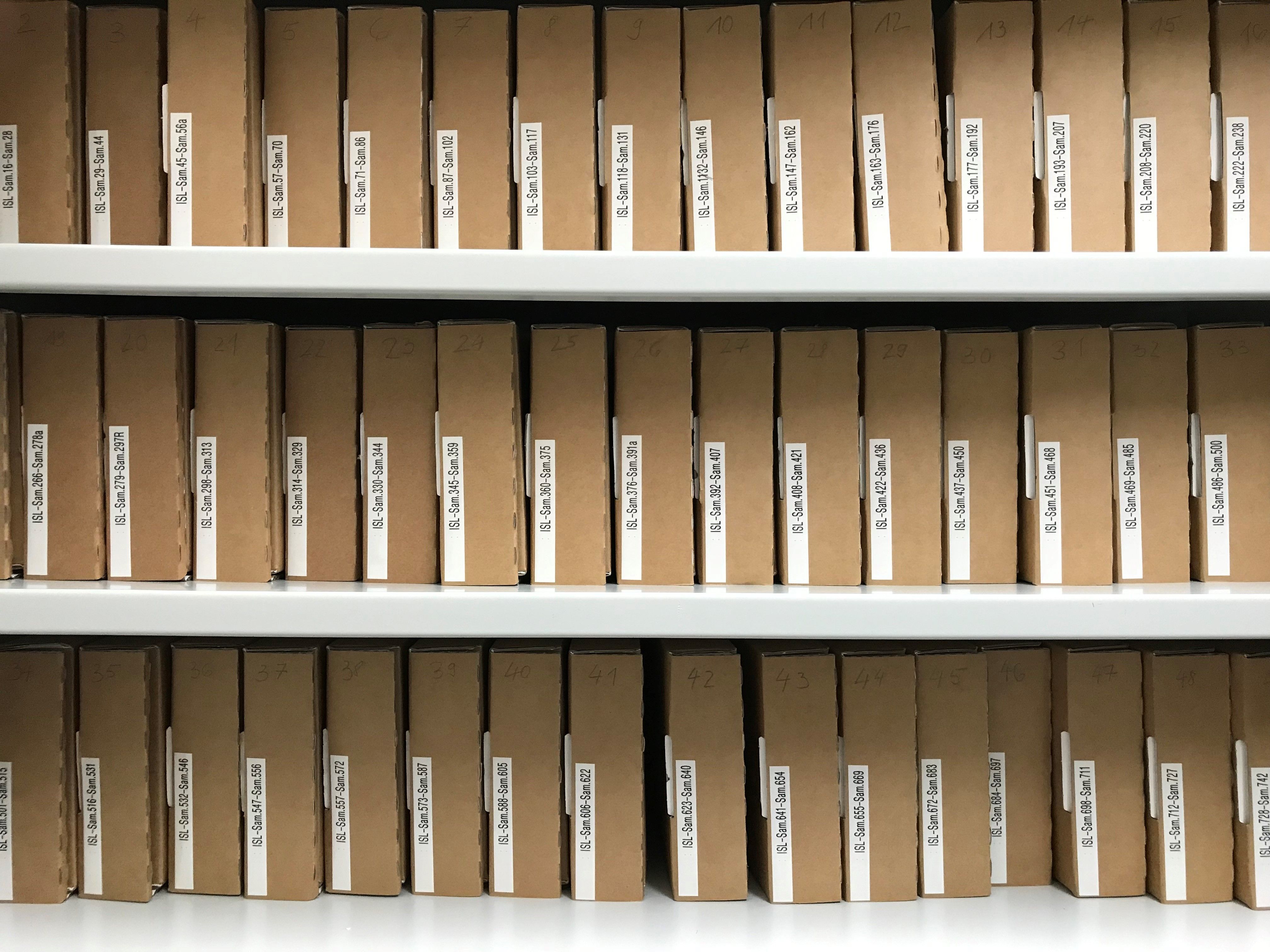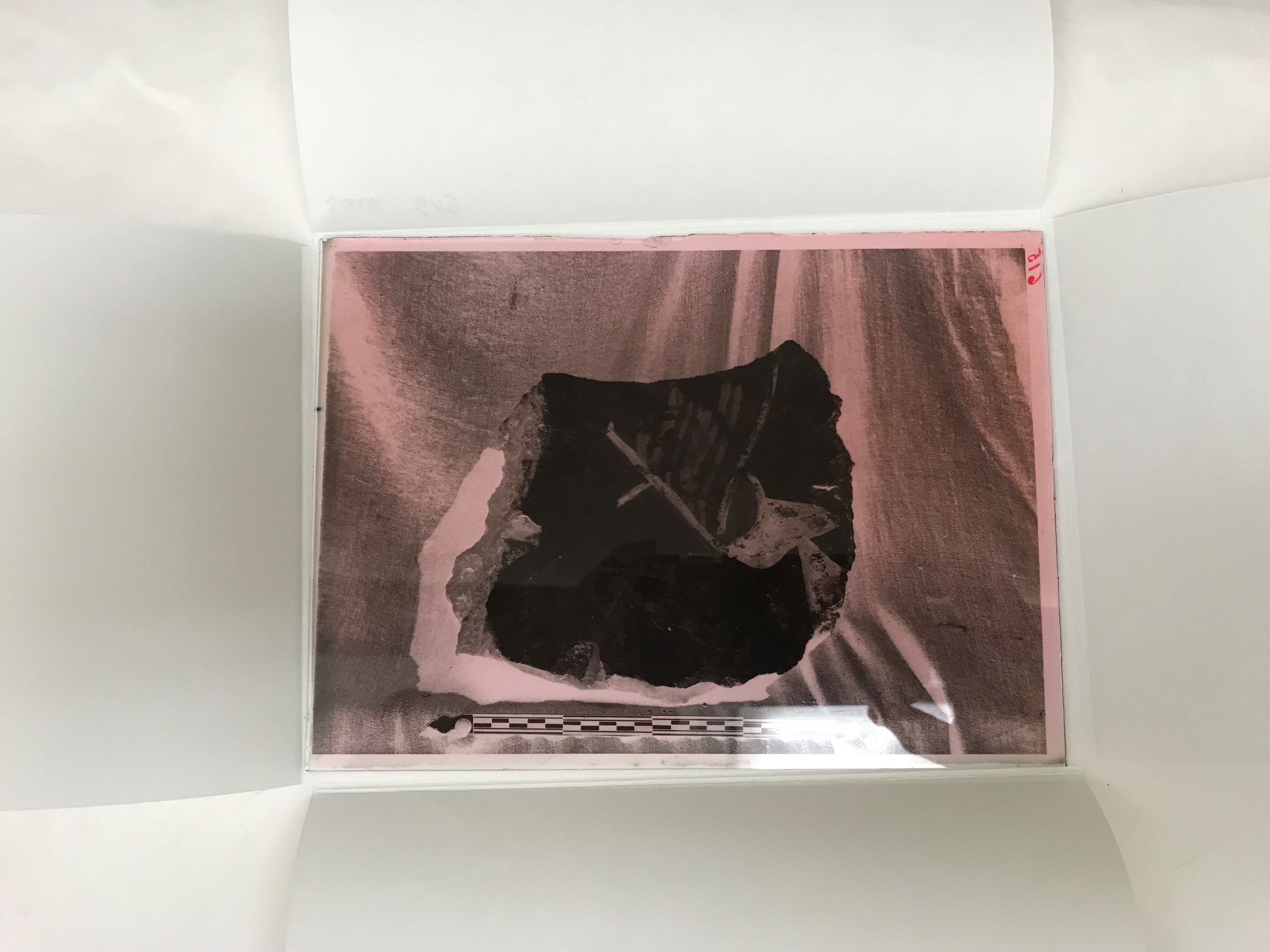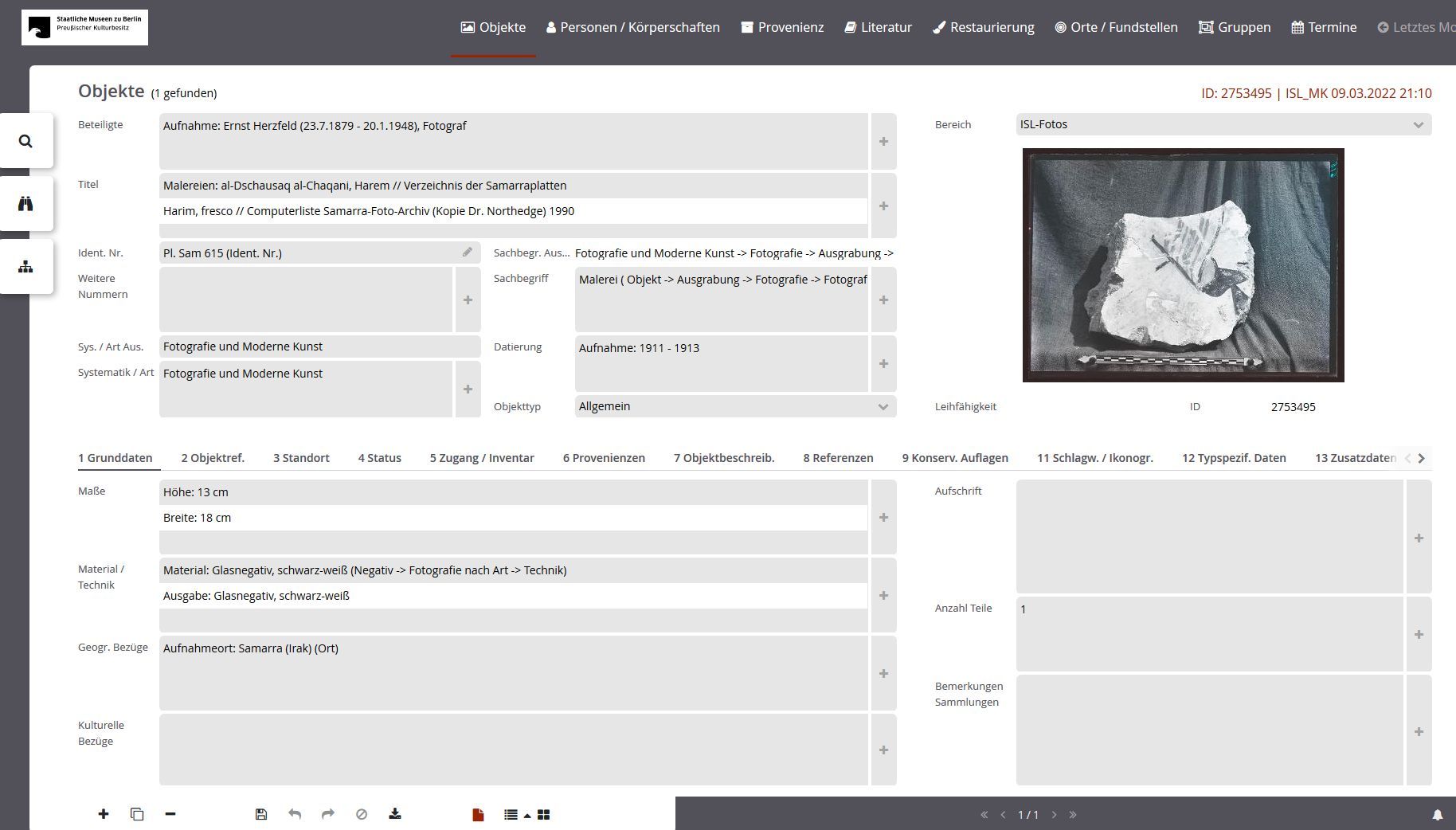IN 2021, THE MUSEUM FOR ISLAMIC ART DIGITALISED THE GLASS AND PLASTIC NEGATIVES AND DIAPOSITIVES FROM THE TWO EXCAVATION CAMPAIGNS BY THE MUSEUM IN SAMARRA (TODAY: IRAQ).
ALL OF THE 1.500 OR SO PRESERVED PHOTOGRAPHS ARE NOW AVAILABLE FOR THE FIRST TIME.
Digitalisation was made possible by the German Digital Library as part of the NEUSTART CULTURE (CULTURE RESTART) programme sponsored by the German Federal Government Commissioner for Culture and the Media (BKM).
VIEW ALL DIGITAL REPRODUCTIONS OF SAMARRA
SEARCHING FOR SAMARRA ONLINE
Search the digitalised negatives and diapositives from the excavation campaigns by the Museum for Islamic Art in Samarra for photographs of objects, buildings and landscapes from 1911-13.
WHAT DOES "DIGITALISING" ACTUALLY MEAN? WHAT HAS BEEN DONE?
RECORDING OBJECTS
Museum employees recorded the condition of the negative, took measurements and noted the location.
PHOTOS OF A PHOTO
Photographers photographed the objects on a transparency unit, in order to protect the damaged surfaces of the originals.
LIST OF IMAGES AND BLUEPRINTS
What can be seen in the photos? Employees compiled information about what can be seen in the photos from the list of pictures and blueprints.
Database
Where are the photos and all the information compiled stored? Employees recorded all the information in the museum database.
WHY DIGITALISE?
Ernst Herzfeld used two cameras that he brought from Germany, along with photographic materials: an Agfa camera for the glass plates and a Kodak camera for plastic films.
Around 1.500 black/white negatives are preserved today, as well as a few large colour diapositives. After over a hundred years, some of the original glass plates, negative and diapositives are badly damaged. The glass plates are somewhat fragile (Pl. Sam 258, Pl. Sam 490). One decay process that occurs very frequently, and is easy to recognise, is known as 'silver mirror' and causes a metallic blue gloss, particuarly in corners and at borders (Pl. Sam 284).
Another typical aging process involves the emulsion peeling off. Emulsion is the light-sensitive layer on the glass support, i.e. the side that shows the picture. The adhesion between the emulsion and the glass support may dissolve as a result of moisture and/or temperature fluctuations. The layer may sometimes flake (Pl. Sam 415) and is vulnerable to scratches. Water can even cause the picture to become completely lost (Pl. Sam 473).
AND NOW?
Today, the negatives and diapositives are stored in an archive at a special temperature and only moved with great care.
Making the originals accessible via digitalisation now means that they do not need to be picked up and moved, which prevents these unique testimonies from being further destroyed.
WORKING WITH DIGITAL REPRODUCTIONS
Even the museum employees were not fully aware of the portfolio, due to the fragile preservation conditions of the originals and the limited accessibility in the photo archive.
This led to the idea of asking current and former employees to take a closer look into the digital reproductions for the special exhibition "Samarra Revisited - A New Look Into Excavation Photographs from the Caliphs' Palaces". 24 participants chose five photographs from Samarra which touched on their areas of work.
